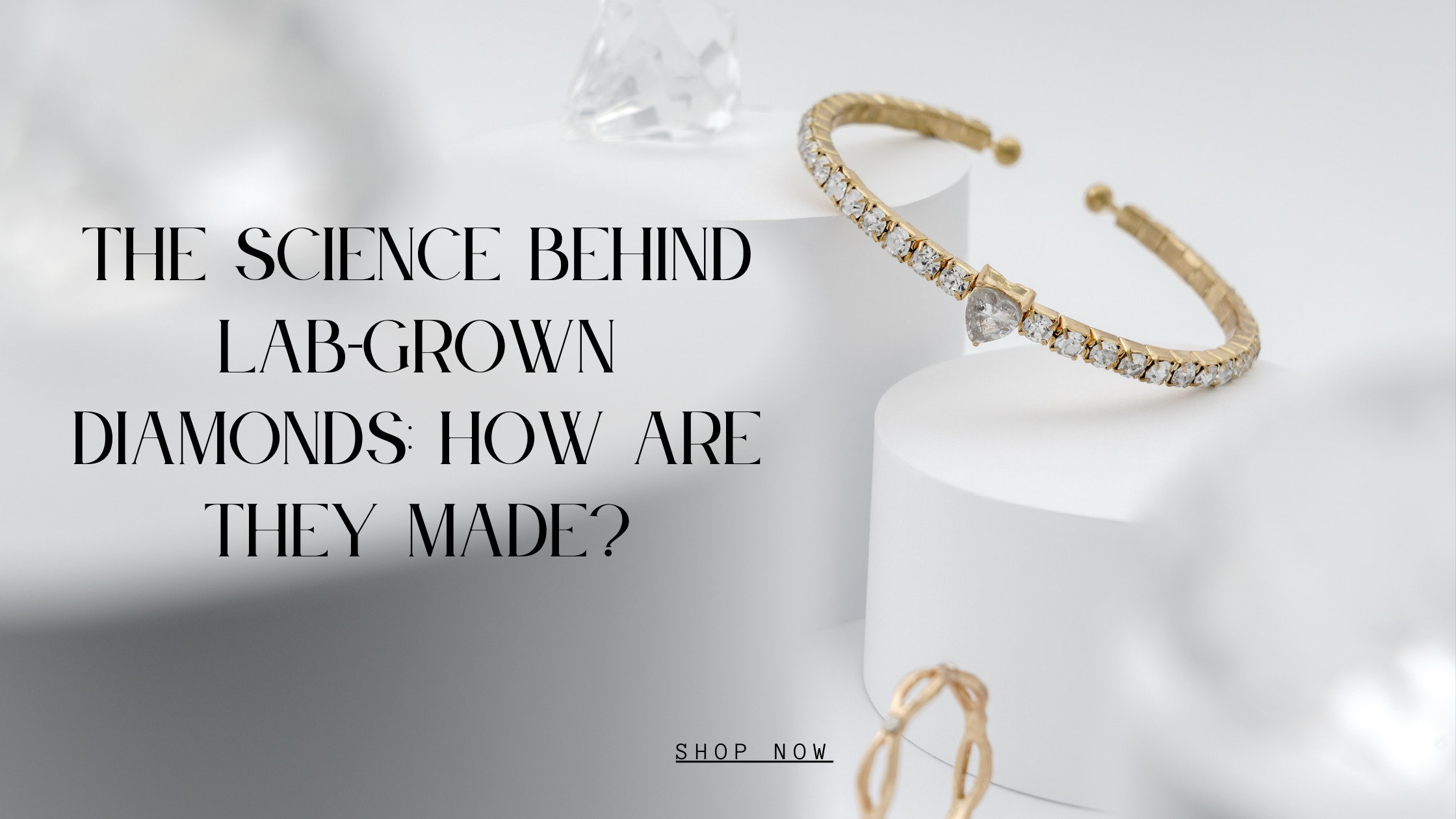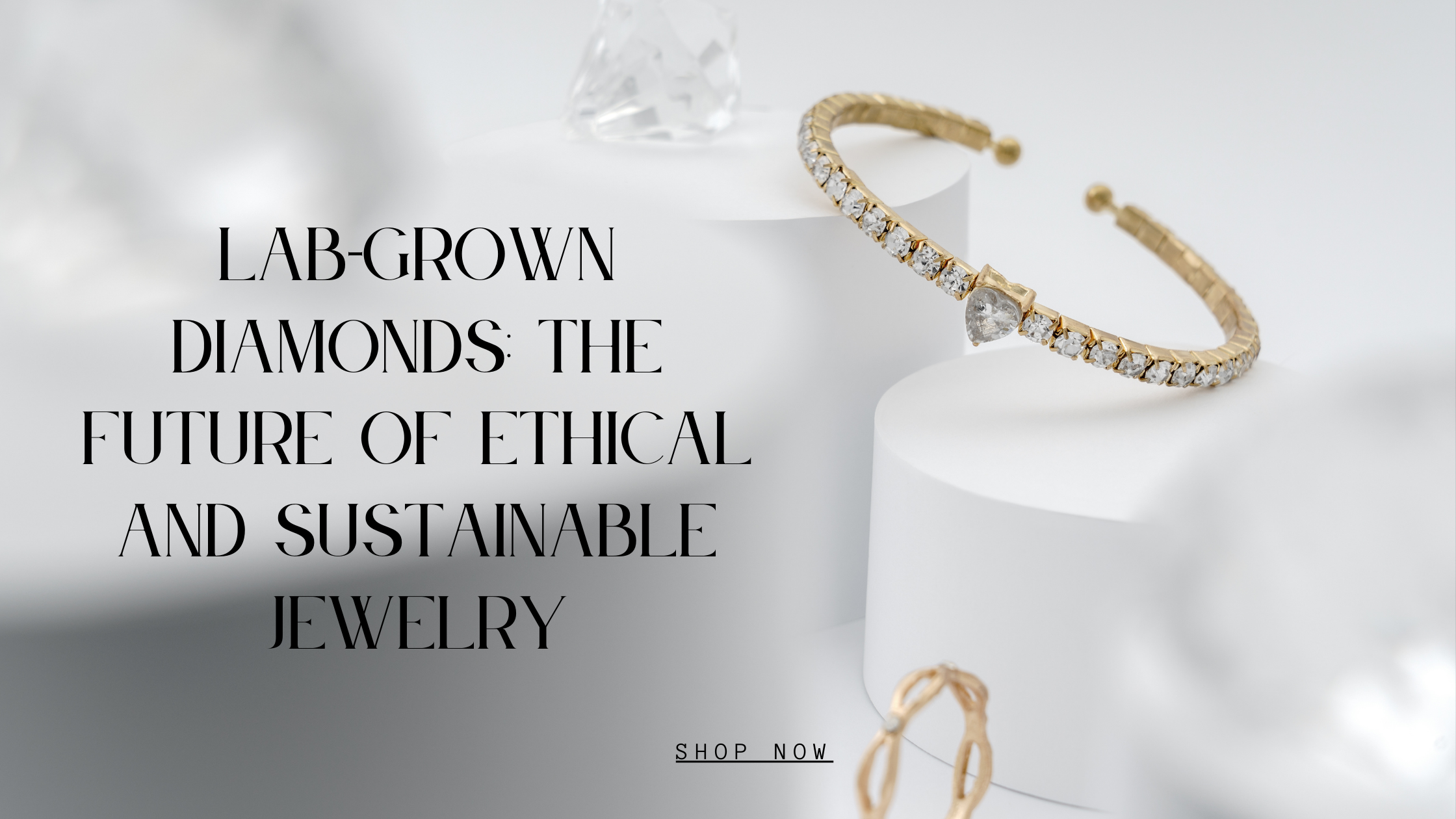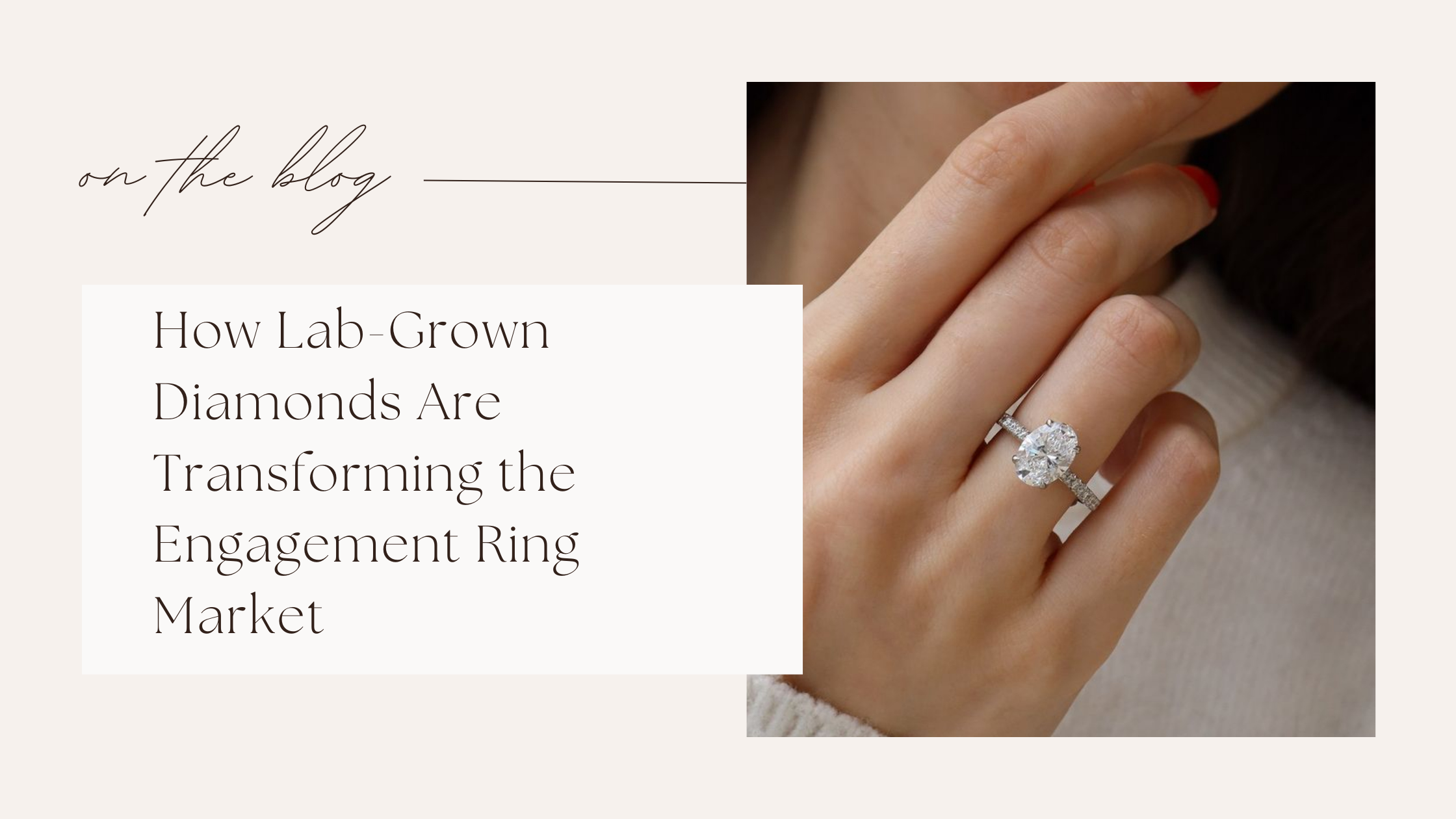
How is a lab-grown diamond created ?
Lab-grown diamonds are becoming increasingly popular in the world of jewelry, celebrated for their ethical sourcing, affordability, and stunning appearance. But what exactly goes into making these diamonds? The science behind lab-grown diamonds involves sophisticated processes that replicate the natural formation of diamonds, producing gems that are chemically, physically, and optically identical to those mined from the earth.
In this blog, we'll take a deep dive into How is a lab-grown diamond created? The two primary methods used to create lab-grown diamonds: High-Pressure High-Temperature (HPHT) and Chemical Vapor Deposition (CVD). We'll explore how these processes work and why they are revolutionizing the diamond industry, providing consumers with beautiful and sustainable alternatives for engagement rings, wedding rings, diamond bracelets, and other fine jewelry.
Read More: Are Lab grown diamond real diamonds
What Are Lab-Grown Diamonds?
Before diving into How is a lab-grown diamond created ?, it's essential to understand what lab-grown diamonds are. Lab-grown diamonds, also known as synthetic or cultured diamonds, are diamonds created in a laboratory setting. Despite their man-made origin, they are indistinguishable from natural diamonds in terms of chemical composition and physical properties.
Read More:
The High-Pressure High-Temperature (HPHT) Method
The High-Pressure High-Temperature (HPHT) method is one of the oldest and most widely used processes for creating lab-grown diamonds. It mimics the natural conditions under which diamonds form deep within the earth.
How HPHT Works
- The Diamond Seed: The process begins with a small diamond seed, which serves as the foundation for the new diamond. This seed is often a tiny piece of natural diamond or a previously grown lab diamond.
- Application of High Pressure and Temperature: The diamond seed is placed in a press, where it is subjected to extreme pressure (approximately 1.5 million pounds per square inch) and high temperature (around 1500°C). These conditions are similar to those found 100 miles below the earth’s surface, where natural diamonds are formed.
- Carbon Source: A carbon source, such as graphite, is placed around the diamond seed. Under the intense pressure and heat, the carbon atoms begin to bond with the seed, gradually forming a new diamond crystal.
- Growth and Cooling: The diamond grows layer by layer as carbon atoms attach to the seed. Once the desired size is reached, the diamond is slowly cooled to room temperature, preventing cracking or damage.

Applications of HPHT Diamonds
HPHT diamonds are commonly used in various types of jewelry, including engagement rings, wedding rings, and diamond bracelets. Their durability and brilliance make them a popular choice for fine jewelry, providing consumers with a high-quality yet affordable alternative to mined diamonds.
The Chemical Vapor Deposition (CVD) Method
Chemical Vapor Deposition (CVD) is a more recent development in the production of lab-grown diamonds. This method allows for greater control over the diamond's properties, making it possible to create diamonds with specific characteristics such as color, clarity, and size.
How CVD Works
- The Diamond Seed: Similar to the HPHT process, CVD starts with a diamond seed placed in a chamber. The seed can be a small piece of natural or lab-grown diamond.
- Gas Mixture: The chamber is filled with a carbon-rich gas, typically methane, along with hydrogen. The gas mixture is heated to a temperature of around 800°C, causing it to break down into carbon atoms.
- Diamond Growth: As the carbon atoms break free, they begin to settle on the diamond seed, bonding and forming new layers of diamond. This process occurs at a much lower pressure than HPHT, allowing for more precise control over the diamond's properties.
- Layer-by-Layer Formation: The diamond grows one atomic layer at a time, ensuring a high degree of uniformity and quality. The process can be adjusted to produce diamonds of different sizes, colors, and clarity grades.

Applications of CVD Diamonds
CVD diamonds are particularly valued for their consistency and the ability to produce rare colored diamonds, such as blue or pink diamonds. These diamonds are often used in custom engagement rings, wedding rings, and other diamond jewelry, offering a range of options for those seeking unique and personalized pieces.
Why Choose Lab-Grown Diamonds?
Lab-grown diamonds offer numerous advantages over traditional mined diamonds, making them an attractive option for modern consumers:
- Ethical and Sustainable: Lab-grown diamonds are created without the environmental and ethical issues associated with diamond mining. They are an excellent choice for those who prioritize sustainability and want to avoid conflict diamonds.
- Affordable Luxury: One of the biggest draws of lab-grown diamonds is their affordability. They are typically 20-40% less expensive than mined diamonds of comparable size and quality, allowing consumers to purchase larger or higher-quality diamonds for their budget. This makes them ideal for affordable rings, bracelets, and other diamond jewelry.
- Variety and Customization: The controlled environment of lab-grown diamond production allows for the creation of diamonds with specific characteristics, including custom shapes and colors. Whether you're looking for a classic round diamond engagement ring or a unique colored diamond bracelet, lab-grown diamonds offer endless possibilities.
Read More: Lab grown diamond vs. Natural diamond
Conclusion
The science behind lab-grown diamonds is a fascinating blend of technology and nature, resulting in stunning gems that rival their natural counterparts. Whether created through the HPHT or CVD method, lab-grown diamonds provide a sustainable, ethical, and affordable option for those in search of luxury jewelry. From engagement rings and wedding rings to diamond bracelets and other fine jewelry, lab-grown diamonds are paving the way for a brighter, more responsible future in the diamond industry.
By choosing lab-grown diamonds, you're not only investing in a beautiful and durable piece of jewelry but also supporting a more sustainable and ethical industry. Explore the possibilities of lab-grown diamonds today and discover how these remarkable gems can become a part of your story.


